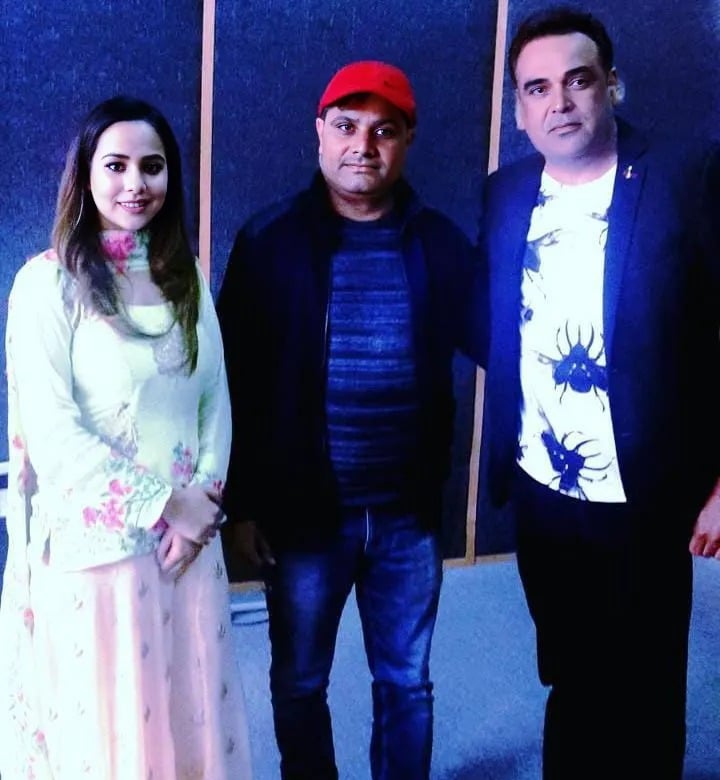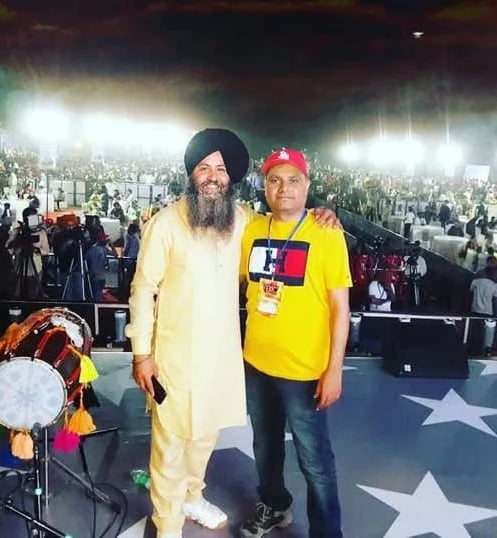Gurnam Singh Director of Photography
Behind the Lens: Gurnam Singh's Cinematic Journey as Director of Photography




In the visually driven world of cinema, the director of photography (DOP) is the silent architect of storytelling. One such master craftsman is Gurnam Singh, a skilled and visionary cinematographer whose expertise behind the camera has brought to life some of the most poignant visual experiences in Indian cinema. With a growing body of work that includes Bibi Rajni, Yashoda, Dulla The Robinhood (2025), Middle Class Melodies, and Khatre Da Ghuggu, Gurnam Singh continues to evolve as one of the most dynamic DOPs in contemporary filmmaking.
Humble Beginnings with a Clear Vision
Gurnam Singh’s journey into the world of cinema began not with bright lights or red carpets, but with an undying passion for storytelling through visuals. Raised in Punjab, where storytelling is rooted deeply in folk traditions, Singh was drawn to the aesthetics of light and shadow from an early age. After completing his formal education in cinematography, he steadily climbed the ranks of the film industry, working as an assistant camera operator and gradually learning the nuances of lensing, lighting, and narrative framing.
Singh was never in a hurry to make it to the top; instead, he focused on mastering the craft. His patience and perseverance bore fruit when he earned his first big break as a Director of Photography—a role he would soon master and innovate within.
Bibi Rajni: A Tale of Strength Captured in Frames
Among Gurnam Singh's most talked-about works is the critically appreciated film Bibi Rajni. The film, which follows the life of a resilient Punjabi woman battling societal norms, is a testimony to Singh’s sensitivity as a cinematographer. Through a carefully curated visual tone, Singh managed to capture the raw emotions of its lead character while staying true to the earthy and rustic charm of rural Punjab.
His use of natural light, coupled with long, uncut shots, added authenticity and emotional depth to the storytelling. Each frame was treated like a painting—subtle, powerful, and richly layered. Bibi Rajni was a film where the camera didn’t just record performances; it participated in them.
From Punjab to the South: Yashoda
Another significant milestone in Singh’s filmography is the Telugu-language thriller Yashoda, featuring Samantha Ruth Prabhu. This film marked his venture into South Indian cinema, showcasing his versatility across regional film industries. The genre shift from emotional drama to action-thriller was a test of adaptability, and Singh passed with flying colors.
In Yashoda, Singh crafted a tense, high-stakes environment with clinical precision. The film’s mysterious plotline demanded a cinematographer who could handle shifting tones and atmospheric changes. Whether it was the high-energy chase sequences or the dim, cold corridors of a secretive institution, Singh’s lens created suspense without overshadowing the narrative.
His ability to balance aesthetics with tension ensured that Yashoda remained visually compelling throughout. It was also a testament to his collaborative spirit, as he seamlessly aligned his cinematographic style with the vision of the director and performance of the lead actors.
Dulla The Robinhood (2025): Merging Myth and Modernity
Perhaps one of his most ambitious projects yet is the upcoming Punjabi action film Dulla The Robinhood (2025). In this myth-inspired reimagining of a heroic outlaw, Singh has taken on the challenge of blending folklore with modern cinematic sensibilities. The film, set against a backdrop of rebellion and justice, required a grand visual scale—and Singh delivered just that.
With sweeping drone shots of lush fields, action-packed battle sequences, and meticulously lit night scenes, Dulla The Robinhood (2025) is expected to be a visual treat. Singh has reportedly experimented with high frame-rate action shots and stylized color grading to give the film a bold and epic feel.
In a genre that often relies heavily on theatrics, Singh ensures that every frame remains rooted in emotional realism. According to insiders, his work on Dulla is among the most technically advanced of his career, promising a landmark moment for Punjabi cinema.
Slice of Life in Middle Class Melodies
Switching gears to a lighter genre, Singh’s work in Middle Class Melodies is a showcase of restraint and relatability. This Telugu-language dramedy about a young man’s dream of owning a hotel is filled with quiet moments, humorous beats, and simple joys—all of which were brought to life by Singh’s understated cinematography.
Here, Singh's approach was minimalist. He used handheld shots and warm color palettes to immerse viewers in the everyday lives of middle-class characters. The camera became a fly-on-the-wall observer rather than a narrator, allowing the story’s warmth and charm to shine.
His deep understanding of space, community settings, and real-life textures helped Middle Class Melodies become a relatable visual experience. The movie reminded audiences that not all great cinematography needs to be grand—it can be subtle, heartfelt, and quietly brilliant.
Khatre Da Ghugg: Celebrating Cultural Comedy
In Khatre Da Ghuggu, a Punjabi comedy rooted in local traditions and quirky characters, Singh once again showcased his flair for adapting to the film’s tone. The movie relies heavily on situational humor, vibrant Punjabi settings, and a strong cultural backdrop.
Singh’s camera brought vibrancy and energy to each scene, using fast-paced transitions and lively compositions to enhance comedic timing. His knack for capturing group dynamics and expressions in wide shots made the film visually engaging and dynamic.
Whether it was a village fair, a loud family gathering, or an unexpected twist, Singh’s visuals added rhythm and pace to the narrative. His understanding of the film’s cultural essence played a major role in its visual success.
Philosophy of a Cinematographer
Gurnam Singh is not just a technician; he is a storyteller with a lens. His approach to cinematography stems from a belief that visuals should evoke emotions without overwhelming the story. Each film he works on is treated as a unique canvas, and he adapts his techniques accordingly.
In interviews, Singh has emphasized the importance of collaboration, research, and understanding the director’s vision. He believes in striking a balance between innovation and discipline, often experimenting with new formats while retaining narrative integrity.
He also advocates for emerging cinematographers to develop a strong foundation in lighting, framing, and editing. According to Singh, a good cinematographer must understand the emotional arc of a scene as well as its technical requirements.
Looking Ahead
With a steadily expanding body of work and growing recognition across regional cinemas, Gurnam Singh is well on his way to becoming one of the most sought-after DOPs in India. His upcoming collaborations reportedly include both feature films and web series, hinting at his adaptability to new-age content platforms.
Singh’s ability to traverse genres—drama, action, comedy, and thriller—makes him a valuable asset in any production team. More importantly, his consistent commitment to visual storytelling ensures that every film he touches leaves a lasting impression.
Conclusion
Gurnam Singh’s journey from a passionate film student in Punjab to a respected Director of Photography working across Indian film industries is nothing short of inspiring. His work in Bibi Rajni, Yashoda, Dulla The Robinhood (2025), Middle Class Melodies, and Khatre Da Ghuggu reflects not only technical brilliance but also an emotional depth that sets him apart.
As Indian cinema continues to evolve, the contributions of behind-the-scenes artists like Gurnam Singh remind us that true magic often begins behind the lens.
